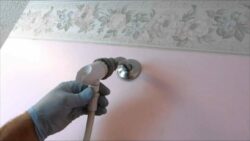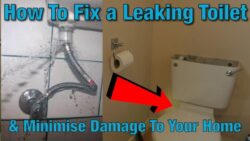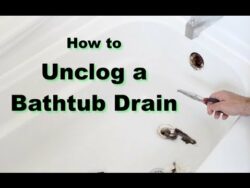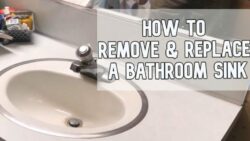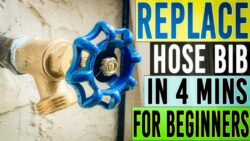In the DIY video by HomeServe titled “How to Unclog a Sink Using a Drain Snake,” you will learn a step-by-step process for unclogging sink drains using a drain snake. Using drain cleaners and solvents should only be considered as a last resort, as they can be toxic. Instead, this video provides you with the knowledge and know-how to safely and effectively unclog your sink drain using a drain snake. The video demonstrates the process on a kitchen sink but assures that a similar process can be used for most household sinks. From the necessary tools to the specific steps, the video guides you through the process to ensure your sink is back in working condition.
The video begins by explaining the different types of traps commonly found in sink drains, such as P traps, drum traps, union traps, and traps with cleanouts. The demonstration focuses on a sink with a P trap and cleanout. It emphasizes the importance of drain snakes, which are easily accessible from hardware stores or online suppliers.
The video then takes you through the step-by-step process, from preparing the area and removing the cleanout fitting and trap cover to inserting and spinning the drain snake to clear the blockage. It highlights the need for caution and attention to detail throughout the process. The video concludes by reminding viewers to reconnect the drainage, check for any leaks, and run water to ensure the blockage is cleared. It also advises that if the blockage is more than 20 feet away, calling a professional is recommended.
Tools and Materials Needed
To unclog a sink using a drain snake, you will need the following tools and materials:
- 25-foot hand snake
- Adjustable pliers
- Small bolt
- Rags
- Work gloves
- Protective glasses
- Teflon tape
Having these tools and materials ready will ensure a smooth and effective unclogging process.
Understanding Sink Traps
Introduction to sink traps
Sink traps are essential components of a drainage system as they prevent sewer gases from escaping and help prevent blockages. They are commonly found under sinks and are responsible for trapping small objects and collecting debris.
Types of traps
There are several types of traps commonly used in sink drains. These include P traps, drum traps, union traps, and traps with cleanouts. The most common trap found in kitchen sinks is the P trap with cleanout.
Description of drain trap and its function
The drain trap is a U-shaped curved pipe that is installed below the sink drain opening. It acts as a seal to prevent sewer gases from entering the living space. Its primary function is to collect debris such as hair, sand, and food remnants, which can cause blockages over time.
Common trap for kitchen sinks – P trap with cleanout
The P trap with cleanout is the most common trap found under kitchen sinks. It has a convenient cleanout feature that allows for easier access to the drainage system for cleaning, clearing blockages, or camera inspections. This type of trap is designed to effectively trap debris while providing a way for maintenance and repairs.
Choosing a Drain Cleaning Method
Why drain cleaners and solvents should be last resort
Drain cleaners and solvents are often used as a quick fix for clogged sinks. However, these chemicals can be harmful to both the environment and the plumbing system. It is recommended to use them as a last resort due to their potential negative effects.
Using a drain snake as an effective and safe method
A drain snake, also known as a plumber’s snake or auger, is a tool specifically designed for unclogging drains. It consists of a long flexible cable with a spiral-shaped head. Using a drain snake is a safe and effective method because it physically removes the blockage without the need for harmful chemicals.
Availability of drain snakes in hardware stores
Drain snakes are widely available in hardware stores and online suppliers. They come in different lengths to accommodate various drain depths. It is recommended to choose a drain snake that is at least 25 feet long to handle most household sink clogs effectively.

Preparing for the Process
Setting up a bowl to collect water drainage
Before starting the unclogging process, it is essential to set up a bowl or container under the drain to collect any water that may drain out. This will prevent water damage to the surrounding area.
Removing the cleanout fitting and trap or cover
To access the clog, you will need to remove the cleanout fitting and trap or cover. This can usually be done by using adjustable pliers to loosen and remove the fittings. Take caution not to damage any surrounding pipes or fixtures during this process.
Importance of stopping the water from dripping
Before proceeding with unclogging, it is crucial to ensure that the water has completely stopped dripping from the disconnected pipes. This will make the process more manageable and prevent unnecessary mess.
Importance of protecting the work area
Clogs can be messy, and unclogging a sink may involve dirty water and debris. It is important to protect the work area by placing rags or towels around the sink to absorb any spills or splashes. Wearing work gloves and protective glasses is also recommended to prevent any injury or contamination.
Using the Drain Snake
Feeding the snake into the opening
Insert the head of the drain snake into the drain opening and start feeding it slowly. Ensure that the snake’s cable is securely held and guide it into the drain pipe.
Feeding the snake eight to twelve inches at a time
To avoid overwhelming the drain pipe, it is best to feed the snake in small increments of eight to twelve inches at a time. This allows the snake to navigate through the pipe smoothly and reduces the chances of getting stuck.
Spinning the drum while feeding the snake
As you feed the snake into the drain, it is helpful to spin the drum of the drain snake. This spinning motion helps the snake to navigate around bends and obstructions in the pipe, increasing its effectiveness in unclogging the drain.
Identifying obstructions and blockages
While feeding the snake, you may encounter obstructions or blockages in the pipe. These can manifest as increased resistance or a change in direction. Pay attention to these cues to determine the location and nature of the clog.
Monitoring the length of the snake to avoid going too far
To avoid going too far into the drain pipe, it is important to monitor the length of the snake being fed. Keep track of the snake’s length to ensure that you do not exceed the recommended distance.
Retracting the snake after encountering the blockage
Once you have encountered the blockage with the snake, begin retracting it slowly. This motion may dislodge or break up the clog, allowing it to flow through the drain more easily. Be cautious not to damage the pipe while doing this.
Identifying and handling different types of blockages
Different types of blockages may require specific techniques or tools for removal. For example, grease blockages may require the use of a degreaser or hot water to break them down. Solid objects may need to be manually extracted using pliers or other suitable tools. Assess the nature of the blockage and adjust your approach accordingly.
Reconnecting the Drainage
Applying Teflon tape on the threads if necessary
Before reconnecting the drainage system, inspect the threads of the fittings for any signs of wear or damage. Apply Teflon tape to ensure a good seal and prevent water leakage. This step is especially important if you have disassembled any threaded connections.
Ensuring a good seal of the cleanout trap
When reconnecting the cleanout trap, ensure that it is properly aligned and securely tightened. A good seal prevents leaks and ensures that the drainage system functions properly.
Tightening the junctures to avoid water leakage
After the drainage system components are reconnected, make sure to tighten all junctures adequately. This will prevent water leakage and ensure the stability of the plumbing system.
Testing the drainage by running water
Once the reassembly is complete, test the drainage by running water through the sink. Observe the flow to ensure that the clog has been effectively cleared. If water drains freely without any backups or slow draining, the unclogging process has been successful.
When to Seek Professional Help
Calling a professional for blockages further than 20 feet
If the blockage is located further than 20 feet from the fixture, it is recommended to seek the assistance of a professional plumber. They have specialized tools and expertise to handle more challenging blockages. Attempting to unclog such blockages without proper equipment or knowledge may result in further damage to the plumbing system.
Utilizing advanced drain tools for challenging blockages
Professional plumbers often have access to advanced drain tools such as motorized drain snakes, hydro-jetting machines, and CCTV cameras. These tools can efficiently tackle stubborn blockages and provide a comprehensive assessment of the drainage system.
Conclusion
Unclogging a sink using a drain snake is a practical and effective method that can be done by homeowners with the right tools and knowledge. By familiarizing yourself with the sink trap, choosing the appropriate drain cleaning method, and following the step-by-step process, you can safely and efficiently clear most sink clogs. Remember to be prepared for home repairs and consider HomeServe’s available plans for additional support.
